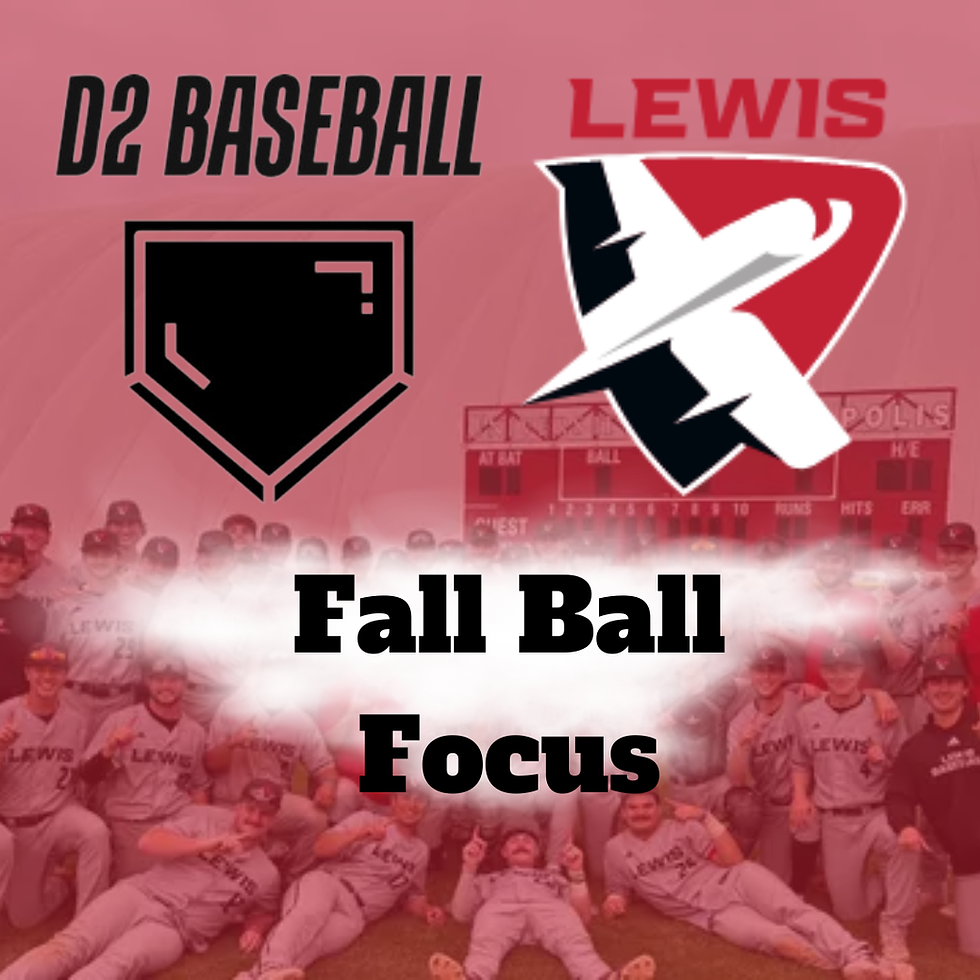NCAA Introduces Major Changes to Division II Baseball Regionalization and Postseason Qualification
- Will Conerly

- Aug 12, 2024
- 3 min read
Updated: Oct 24, 2024
NCAA Proposes Changes to Regionalization and Postseason Qualification in Division II Baseball
The NCAA has introduced significant proposed changes to regionalization and postseason qualification in Division II baseball, aiming to reduce first-round matchups between conference opponents. The changes present both opportunities and challenges for various conferences.
GNAC's Automatic Bid Removal
One of the most impactful decisions from the recent NCAA Division II Committee meetings is the removal of the automatic bid for the Great Northwest Athletic Conference (GNAC). Previously, the GNAC's five teams competed in a postseason tournament where the top three regular-season teams vied for an automatic NCAA tournament spot. This change, highlighted in an NCAA Committee document and discussed with PacWest Commissioner Jessica Harbison Weaver on our podcast, signifies a shift in the postseason landscape for the West Region.
Regionalization Adjustments
The West Region, which includes teams from the PacWest Conference, California Collegiate Athletic Association (CCAA), and the GNAC, will see a redistribution of its bids. With the GNAC losing its automatic bid, the region will now have two automatic bids and four at-large bids. This adjustment could benefit the PacWest Conference, which expects an increase in postseason-eligible teams in the coming seasons.
The PacWest is adding Jessup, Menlo, and Vanguard this season, after recently welcoming Westmont and Chaminade. The expanding league could see positive changes from the new postseason structure. The PacWest has also introduced a postseason tournament, featuring four teams last year, which is likely to expand as the league continues to grow. Additionally, the PacWest is launching a digital network, which we will cover in a future article.
The allocation of postseason spots in Division II baseball is based on the number of schools sponsoring baseball within each region. Regions like the South and Central, with the highest number of baseball-sponsoring schools, currently have a maximum of eight postseason spots. The West and South Central regions currently have six teams.
Historical Context and Future Implications
Expanding the number of postseason spots is typically a gradual process, dependent on the addition and acceptance of new member schools into Division II. This process can sometimes be expedited, as seen with Westmont, the NAIA champion from two years ago. Westmont fast-tracked its transition with support from the PacWest Conference and is now eligible for the postseason in 2025, potentially benefiting from the additional at-large bid in the West Region.
However, the changes raise questions about the future of the GNAC and its postseason tournament format. Will the GNAC maintain its three-team conference tournament? What led to the loss of its automatic bid, given that the league remains a five-team conference?
One possible reason is that the percentage of GNAC teams relative to the total number of teams in the West Region dropped due to the addition of teams in the PacWest. The GNAC had an automatic bid with five teams in 2024 but will not have one in 2025.
Moreover, the GNAC's website still indicates a tournament in 2025, with the winner receiving a bid to the NCAA tournament, which conflicts with the recent NCAA Committee document.
Strategic Shifts and Policy Updates
The NCAA's changes to the Division II baseball championship model aim to modify regionalization bracketing policies to enhance the competitive experience by reducing early matchups against conference opponents. This change is based on feedback from various Division II groups, reflecting a move toward a more competitive and balanced postseason structure.
Key highlights from the NCAA document include:
- Regionalization Principles: The proposal suggests moving the requirement for regional pairing from a legislative mandate to a policy, aiming to reduce the frequency of first-round matchups between conference opponents.
- Fiscal Responsibility: The changes emphasize maintaining cost-effective practices for the championships while adjusting bracketing policies.
- Feedback and Implementation: The Championships Committee has been gathering feedback over the past 18 months, aiming to develop a new bracketing model with input from Division II membership.
- Legislative Changes: The removal of Bylaw 18.4.3.1 from legislation and its placement as policy is seen as a noncontroversial change that will facilitate the new model's development more efficiently.
- Student-Athlete Impact: The changes are expected to have no immediate budget impact and, in the short term, no significant impact on student-athletes, though the new model aims to address their preference for avoiding early matchups against conference opponents.
Conclusion
The removal of the GNAC's automatic bid and the addition of an at-large spot in the West Region mark significant changes in Division II baseball. These adjustments reflect the NCAA's efforts to enhance competitive balance and provide more opportunities for emerging programs. As the landscape of Division II baseball evolves, conferences and teams will need to adapt to the new postseason structure, aiming to capitalize on the opportunities presented.
For more detailed insights, listen to our podcast discussing these changes and their implications for Division II baseball.
Sources:
- NCAA Division II Committee Report
- Podcast with Jessica Harbison Weaver, PacWest Commissioner
- Four Schools to Become D2 Members







Comments